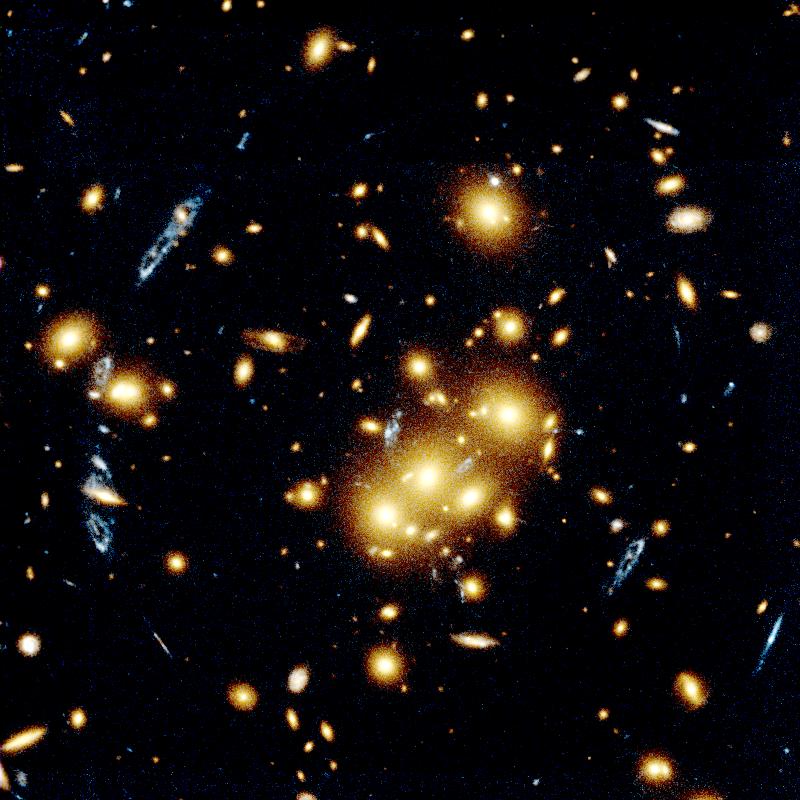
Gravitational Lensing 0024+1654
This Hubble Space Telescope image, taken in 1994, shows several blue, loop-shaped objects that actually are multiple images of the same galaxy. They have been duplicated by the "gravitational lens" of the cluster of yellow, elliptical and spiral galaxies — called 0024+1654 — near the photograph's center. The gravitational lens is produced by the cluster's tremendous gravitational field that bends light to magnify, brighten, and distort the image of a more distant object. In this photograph, light from the distant galaxy bends as it passes through the cluster, dividing the galaxy's light into five separate images. One image is near the center of the image; the others are at 6, 7, 8, and 2 o'clock. The light also has distorted the galaxy's image from a normal spiral shape into a more arc-shaped object. Astronomers are certain the blue-shaped objects are copies of the same galaxy because the shapes are similar. Though the gravitational light-bending process was well known, Hubble's high resolution revealed structures within the blue-shaped galaxy that astronomers had never seen before. For more information, visit: hubblesite.org/news_release/news/1996-10
